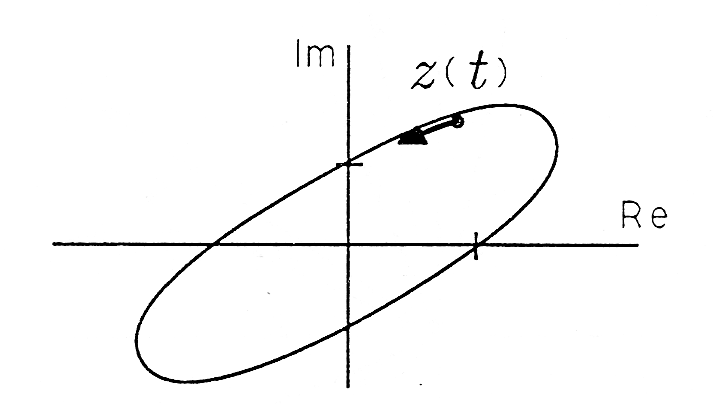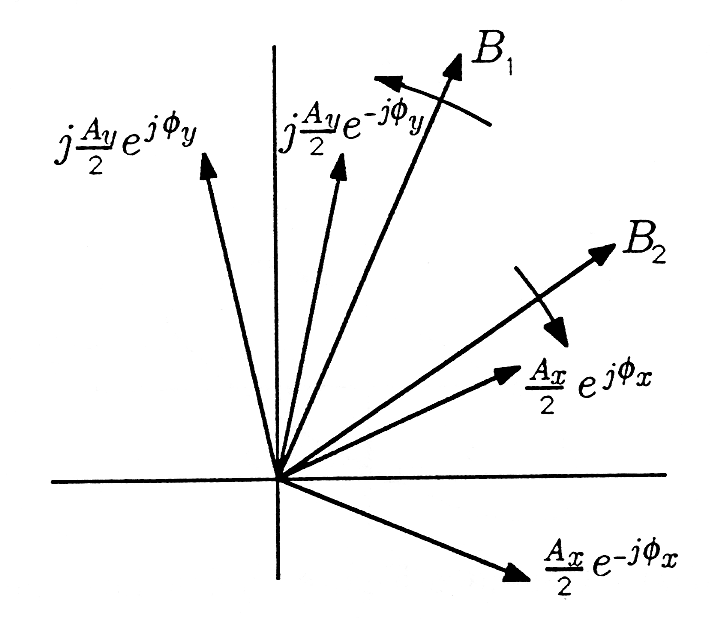| << Chapter < Page | Chapter >> Page > |
Lissajous figures are figures that are turned out on the face of an oscilloscope when sinusoidal signals with different amplitudes and different phases are applied to the time base (real axis) and deflection plate (imaginary axis) of the scope. The electron beam that strikes the phosphorous face then had position
In this representation, is the “x-coordinate of the point,” and is the “y-coordinate of the point.” As time runs from 0 to infinity, the point turns out a trajectory like that of [link] . The figure keeps overwriting itself because repeats itself every seconds. Do you see why?

Two-Phasor Representation. We gain insight into the shape of the Lissajous figure if we use Euler's formulas to write as follows:
This representation is illustrated in [link] . It consists of two rotating phasors, with respective phasors and :

As increases, the phasors rotate past each other where they constructively add to produce large excursions of from the origin, and then they rotate to antipodal positions where they destructively add to produce near approachesof to the origin.
In electromagnetics and optics, the representations of given in [link] and [link] are called, respectively, linear and circular representations of elliptical polarization. In the linear representation, the - and -components of vary along the horizontal and vertical lines. In the circular representation, two phasors rotate in opposite directions to turn out circular trajectories whose sum produces the same effect.

Notification Switch
Would you like to follow the 'A first course in electrical and computer engineering' conversation and receive update notifications?